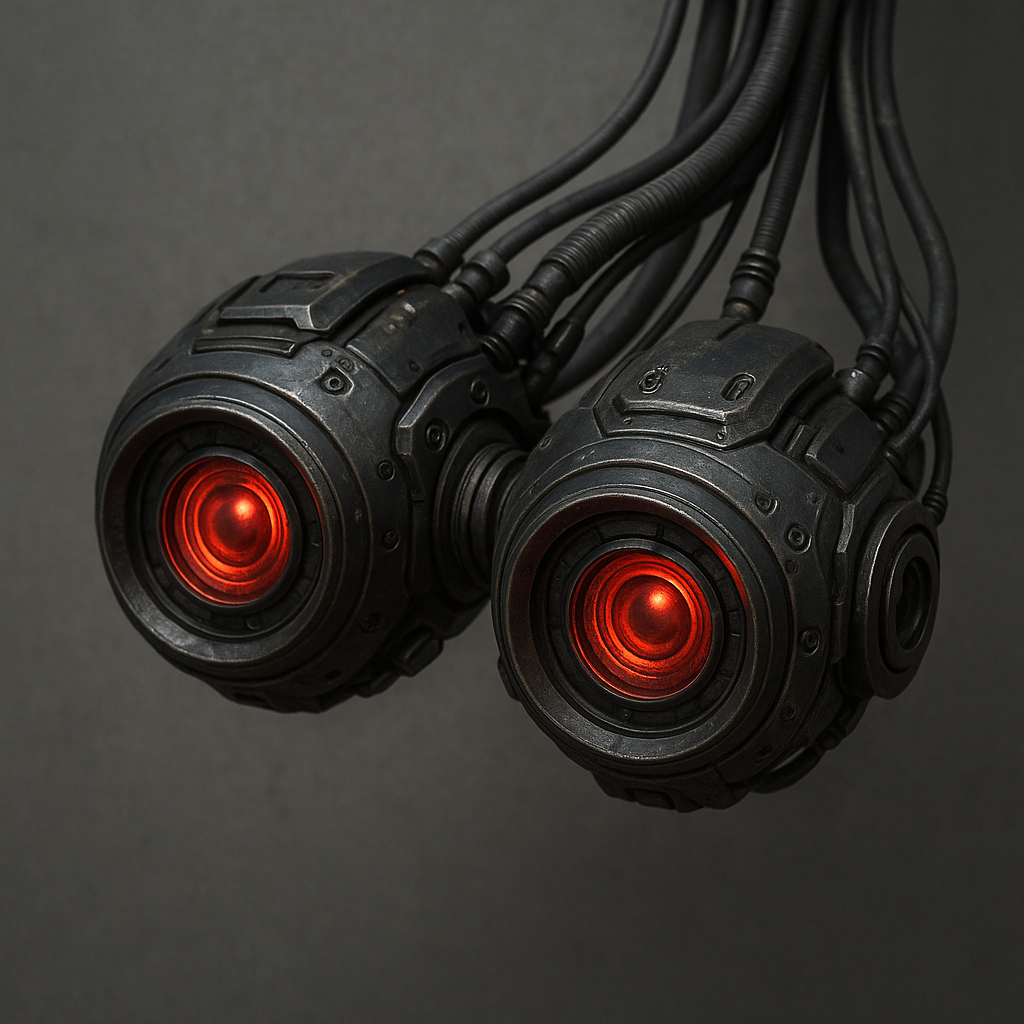Synthetic optics
Synthetic optics, formally classified by Vey’Zari medics as Ocular Augmentation Units (OAU), are advanced cybernetic replacements for natural eyes, engineered for precision visual enhancement, tactical utility, and environmental adaptability. Designed to integrate directly with the user’s optic nerves and cranial processing lattice, OAUs operate on layered sensor stacks, each calibrated for multi-spectrum visibility—ranging from standard light and infrared to thermals, UV scatter, and encrypted waveform tracking. These implants are standard among syndicate enforcers, infiltration agents, and augmented operatives whose roles demand real-time visual analytics, target prioritization, and digital battlefield overlays. Synthetic optics are modular and custom-fitted, often embedded with integrated retinal HUDs, aim-stabilization logic, and cognitive load dampeners to prevent overstimulation during high-input scenarios.
Unlike natural eyes, OAUs do not rely on photoreceptor cells but instead use adaptive nanofilm receptors and pulsed signal amplifiers housed within a reinforced ocular casing. Power is drawn from a cranial microcell or dermal-linked capacitor, and the units are secured through sub-orbital anchor grafts designed to resist displacement during concussive trauma. Most synthetic eyes are housed in matte-black or smoked-metal shells, with subtle luminescent pulses visible in low light. High-clearance models can perform rapid threat parsing, biometric scanning, and motion trajectory prediction, all while feeding data directly into cortical response clusters. While standard OAUs are common among Vey’Zari operatives, more exotic configurations exist for elite units—offering active camouflage integration, emotion masking overlays, and embedded counter-surveillance routines. Full replacement is irreversible, and while many consider OAUs superior to biological vision, the loss of organic sensory nuance—such as depth-linked emotional micro-signals—is noted in post-operative psychological reports. For the Vey’Zari, however, such trade-offs are often considered a tactical gain.
Synthetic Optics
Purpose
Cybernetic replacement for biological eyes
Provides enhanced visual capability and tactical utility
Common UseStandard for syndicate enforcers, assassins, and field operatives
Widespread among full-body augmented personnel
Not Used ForLow-tier civilian procedures
Cosmetic enhancement without neural interface clearance
Core Features- Multi-spectrum vision (visible, infrared, thermal, ultraviolet)
- Integrated retinal HUD with threat analysis
- Target locking and aim assist
- Dynamic light compensation
- Signal tagging for friend/foe identification
- Adaptive nanofilm photoreceptors
- Pulse-signal amplifiers
- Sub-orbital anchor grafts
- Neuro-cortical uplink to cognitive response cluster
- Cranial microcell or dermal capacitor
- Auto-regulated via neural activity
- Smoked-metal iris casing
- Soft internal luminescence in low light
- Can be hidden beneath synthskin overlays (elite-grade)
- Predictive motion tracking
- Biometric scanning
- Active camouflage filtering
- Counter-surveillance logic
- Emotional masking overlays (for infiltration agents)
- Permanent loss of biological sensory nuance
- Vulnerable to high-EM burst fields
- Requires neural recalibration every 12–15 months
Viewed as a mark of tactical maturity
Symbolically tied to awareness, focus, and identity discipline
Known among common slang as “ghostglass” or “coldset”




Comments